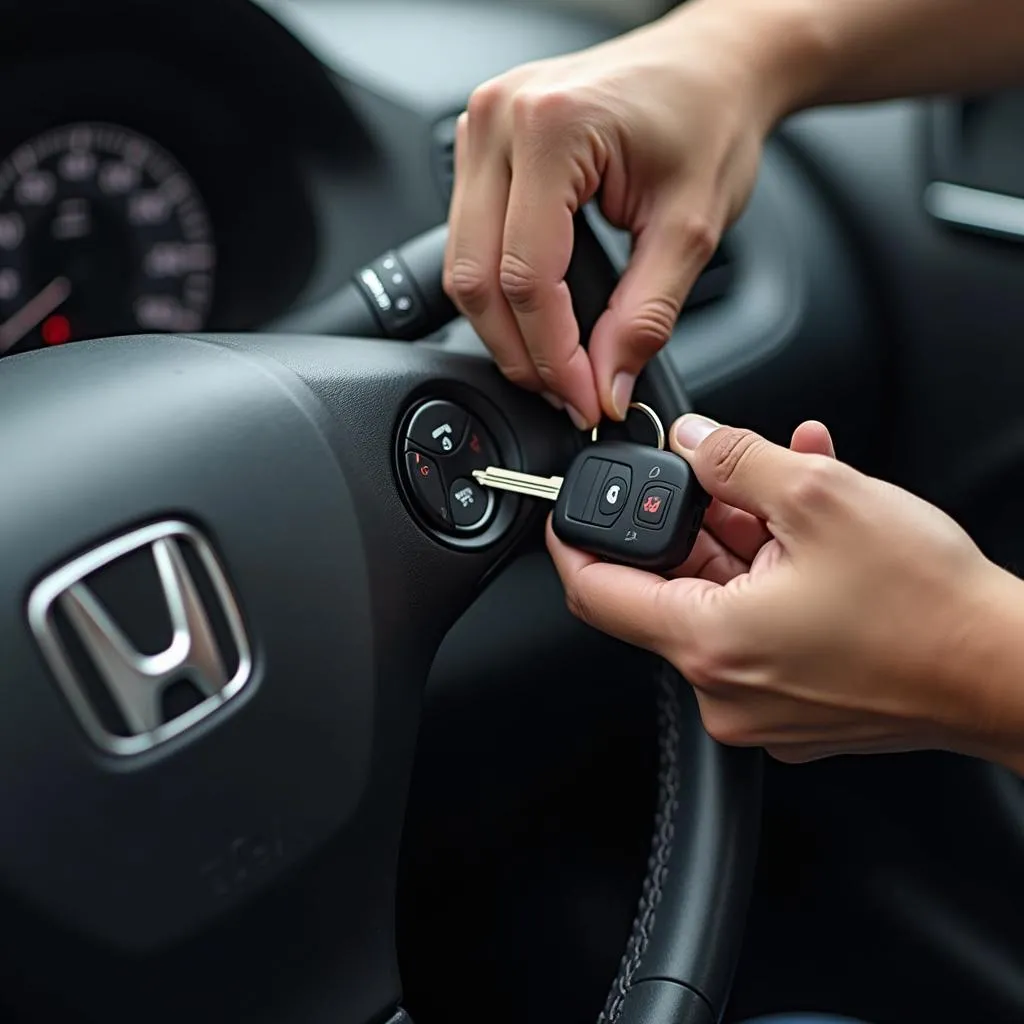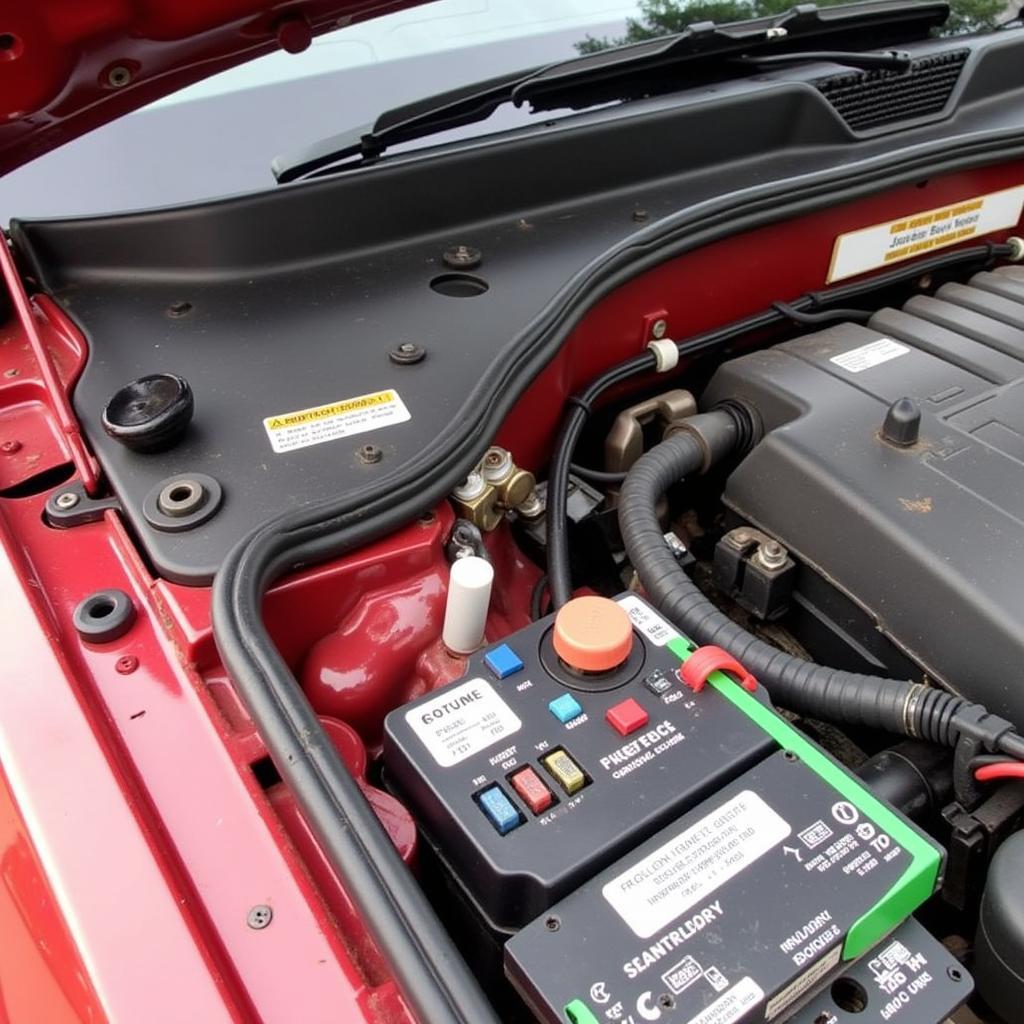A dead car battery is a frustrating experience, especially when it happens repeatedly. If your car battery keeps going flat, it’s a sign of an underlying issue that needs to be addressed. This article will guide you through the common causes of a constantly draining car battery, how to diagnose the problem, and what steps you can take to fix it.
Why Does My Car Battery Keep Dying?
There are several reasons why your car battery might be constantly discharging. Identifying the culprit requires a systematic approach to troubleshooting. Ignoring a draining battery can lead to further complications and even leave you stranded. Let’s explore some of the most frequent causes:
- Parasitic Drain: This is perhaps the most common reason for a car battery to keep going flat. A parasitic drain occurs when an electrical component in your car continues to draw power even after the ignition is off. This could be anything from a faulty interior light to a malfunctioning radio or alarm system.
- Bad Alternator: The alternator is responsible for recharging the battery while the engine is running. A failing alternator won’t charge the battery properly, leading to a gradual discharge and eventually a dead battery.
- Old Battery: Car batteries have a limited lifespan, typically between three to five years. As a battery ages, its ability to hold a charge diminishes, making it more susceptible to going flat.
- Extreme Temperatures: Both extreme heat and extreme cold can negatively impact battery performance. Hot weather can accelerate the chemical reactions inside the battery, leading to faster discharge. Cold weather can thicken the battery’s internal fluids, reducing its capacity to hold a charge.
- Short Trips: Continuously driving short distances without giving the alternator enough time to fully recharge the battery can also lead to a flat battery.
- Corroded Battery Terminals: Corrosion on the battery terminals can impede the flow of electricity, preventing the battery from charging correctly and also causing it to discharge faster.
How to Diagnose a Car Battery Drain
Diagnosing the cause of a car battery drain requires some basic tools and a little bit of patience. Here’s a step-by-step guide:
- Visual Inspection: Start by visually inspecting the battery and its terminals for any signs of corrosion, damage, or loose connections. Clean the terminals with a wire brush and baking soda solution if necessary.
- Battery Test: Have the battery tested at a local auto parts store or mechanic. This will determine if the battery itself is faulty and needs replacement.
- Alternator Test: Similarly, have your alternator tested to ensure it’s functioning correctly and charging the battery effectively.
- Parasitic Drain Test: This test involves using a multimeter to measure the current draw with the ignition off. A small drain is normal, but a significant draw indicates a parasitic drain. Consult a mechanic if this is the case. They can identify and fix the faulty component.
Solutions for a Constantly Draining Car Battery
Once you’ve identified the cause of the draining battery, you can take appropriate action. Here are some common solutions:
- Replace the Battery: If the battery is old or faulty, replacing it is the most straightforward solution.
- Repair or Replace the Alternator: A faulty alternator needs to be repaired or replaced to ensure the battery is charged properly.
- Address Parasitic Drains: Identifying and fixing the source of a parasitic drain can be more complex. It might involve checking fuses, relays, and individual electrical components. A qualified mechanic with specialized diagnostic tools can help pinpoint the problem.
- Clean Battery Terminals: Regularly cleaning the battery terminals with a wire brush and baking soda solution can prevent corrosion and ensure a good connection.
- Limit Short Trips: Try to avoid frequent short trips, or ensure the car runs long enough for the alternator to replenish the battery’s charge. Consider using a battery maintainer or trickle charger if you primarily drive short distances.
- Proper Storage in Extreme Temperatures: During extreme heat or cold, consider parking your car in a garage or using a battery blanket to protect the battery from extreme temperature fluctuations.
Conclusion
A car battery that keeps going flat is a sign of a problem that requires attention. By systematically diagnosing the issue and taking appropriate action, you can prevent the inconvenience and potential danger of a dead battery. If you’re unsure about any of the steps involved, consulting a qualified automotive technician is always recommended. Regular maintenance and timely repairs will ensure your car battery remains reliable and keeps you on the road.
Frequently Asked Questions (FAQ)
- How long should a car battery last? Typically, a car battery lasts between three and five years.
- Can I jump-start my car every time the battery goes flat? While jump-starting is a temporary solution, it’s crucial to address the underlying cause of the drain to prevent further damage.
- How can I prevent my car battery from going flat in cold weather? Parking in a garage or using a battery blanket can help protect the battery from extreme cold.
- What are some signs of a bad alternator? Dim headlights, flickering interior lights, and a warning light on the dashboard are potential signs of a failing alternator.
- Is it safe to drive with a bad alternator? Driving with a bad alternator can eventually lead to a complete battery failure and leave you stranded. It’s best to address the issue promptly.
- How much does it cost to replace a car battery? The cost of a car battery replacement varies depending on the type of battery and the vehicle.
- How can I test my car battery at home? You can use a multimeter to test the battery’s voltage. A fully charged battery should read around 12.6 volts. However, it’s recommended to have it professionally tested for a more accurate assessment.



